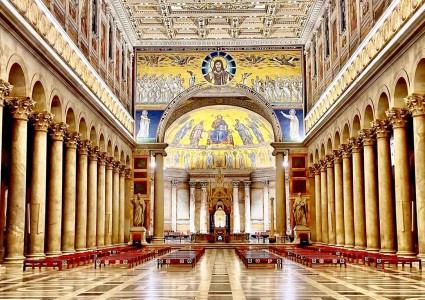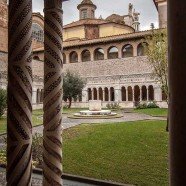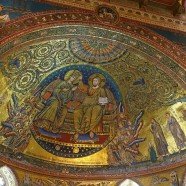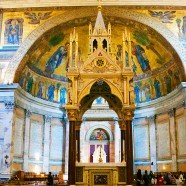
4-hour tour with transfer
The itinerary includes two of the three main Basilicas of Rome: St. John in Lateran, St. Mary Major and St. Paul Outside the Walls*.
St. John in Lateran is the Cathedral of Rome, but since it has gone through so many transformations, it is hardly recognizable today. First founded by Constantine in 314 AD, this is the mother head of all churches, both in Rome and in the world. The church was renovated for the Jubilee of 1650 in Baroque style, preserving the ancient frescoes. Upon request with an extra ticket, it is possible to extend the tour to visit also the medieval cloister.
St. Mary Major is the most intact among the patriarchal Roman basilicas, veritable shrine of inestimable artistic masterpieces, as mosaics and frescoes, preserved into the original appearance of the fifth century. We will see the extraordinary mosaic of the old medieval facade and inside the apse and the ancient icon of Virgin Mary.
St. Paul Outside the Walls is located along via Ostiense and was rebuilt according to its original design after the terrible fire of 1823. A wonderful example of historical memory and Christian tradition, the basilica was erected on the burial place of St. Paul the Apostle and houses authentic masterpieces of medieval art, such as the ciborium of Arnolfo di Cambio.
*Depending on the liturgical celebrations of the Jubilee of 2025, you will visit two of the major Papal Basilicas or alternatively some of the most important basilicas in Rome at the discretion of your guide.
Some of the most representative pictures of this tour
Discover the main stops of this tour

This cloister is the masterpiece of the Vassalletto (father and son) who were Roman architects, as well as sculptors and mosaicists, active at a time when the Church enjoyed great power. The beautiful statues, capitals, decorations, the twisted columns and the mosaic bands in green marbles and porphyry make of this place a real gem of art history, which is worth a visit. It is possible to visit the cloister with an extra ticket.

The decoration of the Early Christian churches, and particularly of the Basilicas, was mostly with mosaics. The largest series of early mosaic decorations in Rome are the panels on the triumphal arch and the nave walls of St. Mary Major, notable for their realistic representations with landscapes, blue skies, architecture in a kind of perspective and modelled figures.

Standing above the high altar of St. Paul Outside the Walls, it is characterized by a rich figural ornamentation inspired by Gothic architectural motifs. Antique porphyry columns support the canopy, whilst foliate capitals, relief figures and Cosmatesque mosaic ornaments complete the decoration.
Some useful information for your experience
Expert and licensed guide, private transfer, full on-site assistance.
Suggested start time: 9.30 am / 2.00 pm. Not recommended on Sunday.